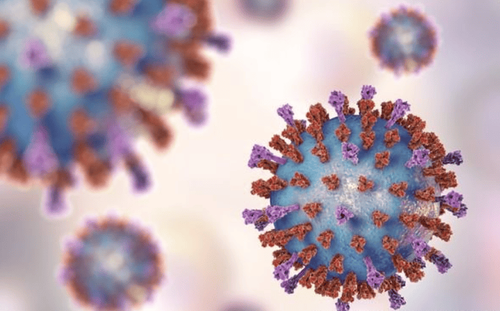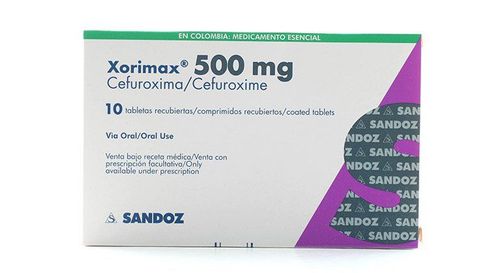This is an automatically translated article.
Posted by Specialist Doctor II Nguyen Thi Tam - Pediatric Center - Vinmec Times City International Hospital
Respiratory Syncytial Virus (RSV) is an important causative agent of acute upper and lower respiratory tract infections in children. It is considered the leading cause of pneumonia in infants and young children: 60% in children and 80% in children < 1 year of age (According to WHO).
1. What is respiratory syncytial virus?
RSV is an enveloped, globular virus of the family Paramyxoviridae. Based on antigenic and genetic variation, RSV is classified into 2 main antigenic groups: A and B. Two groups of respiratory syncytial viruses circulate in parallel, are highly infectious and can cause epidemics in the community. community and hospital.
In the community:
RSV is widely distributed, can occur as an annual seasonal community respiratory infection epidemic, often appearing in the rainy season, or the cold season, when the weather changes suddenly, Children's bodies do not have time to adapt.
Incubation period 3-5 days.
In the Hospital:
RSV can cause nosocomial infections for children hospitalized from the 5th day onwards, the disease is often severe, the hospital stay is long, the mortality rate is high. Some studies have found the prevalence of nosocomial RSV infection to be around 6.6%.
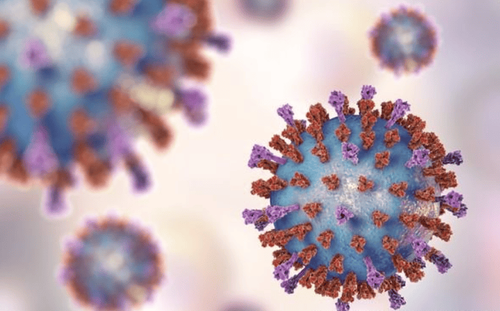
Virus RSV gây nhiễm khuẩn hô hấp cấp ở trẻ em
2. RSV . transmission routes
RSV can be transmitted through 3 ways:
Airborne transmission by small-sized aerosols created when coughing, sneezing (The virus is rapidly inactivated at T> 370C, T<230 C lasts longer. ). Droplet transmission by large aerosols or droplets (Hence the need to isolate the droplet route). Spread through the surface of infected objects. RSV lasts on surfaces such as doorknobs, toys... is 6 hours, rubber gloves 1h30 minutes, cloth gowns, paper 30-45 minutes, on skin 20 minutes (Therefore need to isolate the contact line) . Methods of collecting specimens for RSV testing:
Nasal swab, nasopharyngeal swab with sterile stick (3 times nose or throat swab). Nasopharyngeal aspiration: is the best method. Clean nose.
3. RSV . detection method
There are 3 main methods of RSV diagnosis today:
Rapid test: qualitatively detects respiratory syncytial virus (RSV) antigens causing disease in young children. PCR : Accurately detects the presence of specific DNA of RSV - respiratory syncytial virus in patient samples. Sensitivity 100%, specificity 90%, predictive positive 92%, predictive negative 100%. Testing viral load, viral content.
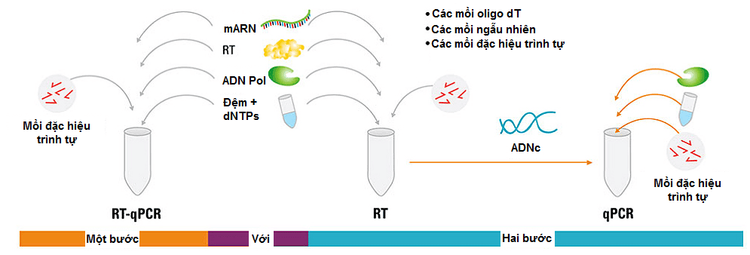
Kỹ thuật xét nghiệm PCR tìm DNA của virus RVS
4. Symptoms of infection
RSV causes cold-like symptoms only in healthy adults and older children. RSV infection usually begins with symptoms of an upper respiratory tract infection: starting with a mild fever for 2-4 days, runny nose, nasal congestion, sore throat, hoarseness and congestive ear infection.
RSV can cause bronchiolitis, acute laryngitis, and interstitial pneumonia when the virus spreads to the lungs in children < 2 years old: the virus adheres to the respiratory tract causing an inflammatory reaction, stimulates a strong cough, increases the secretion of viscous sputum. sticky, can cause obstruction during both inhalation and exhalation, causing shortness of breath, wheezing, intercostal muscle contractions, poor appetite, difficulty sleeping...
RSV often causes severe pneumonia in infants (Children with first-time infections):
May start with low-grade fever, stuffy nose, sneezing. Most begin with a high fever, altered consciousness. Can't drink, stop sucking, suck poorly. Respiratory symptoms: Cough increases, wheezing, breathing rate increases, chest constriction, rales in the lungs, rapid ventilation disturbances, cardiac arrhythmias... causing respiratory failure. RSV can cause serious complications when pneumonia, bronchiolitis in premature babies, newborns, children with underlying diseases such as congenital heart disease, immunocompromised children... high mortality.
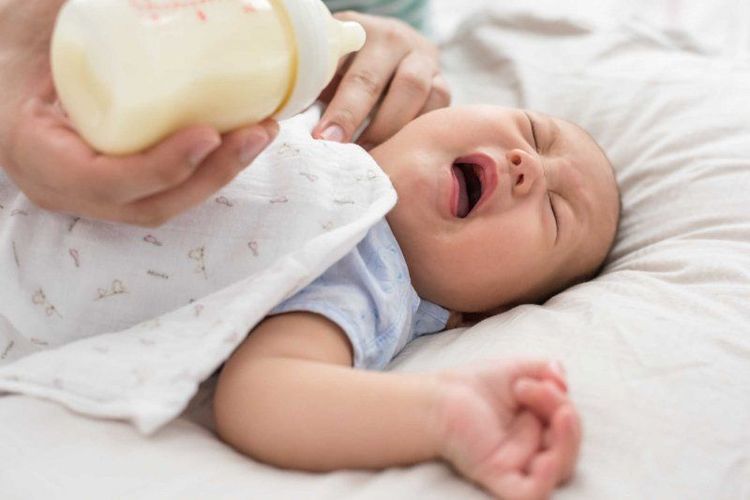
Dấu hiệu trẻ bỏ bú hoặc bú kém
5. Complications of acute respiratory infections caused by RSV
Acute respiratory infections caused by RSV can cause complications:
Apnea, especially in children < 2 months. Atelectasis, especially in bronchiolitis in infants < 3 months. Bacterial superinfection: Antibiotics should be given early in children with severe RSV respiratory infections because it is not known when the child will have a bacterial superinfection. Acute respiratory distress syndrome is a serious complication. Pneumothorax, pneumomediastinum are uncommon.* Dehydration can be seen in the early stages, excess water is seen in the later stages. Heart rhythm disturbances. Died in severe complications.
6. Treatment of respiratory infections caused by RSV
Children with respiratory infections caused by RSV must be kept in isolation rooms.
Treatment of respiratory infections according to the protocol: Upper respiratory tract infection, Bronchiolitis, Pneumonia...
Supportive treatment:
Provide enough fluids in the first days, pay attention to the phenomenon of excess fluid may occur in the following days. Wash the nose with warm physiological saline, clear the airways. 3% saline nebulizer combined with respiratory physiotherapy. Provide adequate nutrition: Eat many small meals by breastfeeding, pouring spoon or eating tube when there is respiratory failure...
7. Steps to take to prevent RSV infection:
Avoid contact with people who have coughs, colds and fevers... Avoid crowded places, especially during RSV season. Wash your hands with soap and water before touching your baby to reduce the risk of infection. Use tissues when coughing and sneezing and throw them away immediately. Do not allow children to be exposed to dust, smoke and tobacco. When having symptoms such as cough, high fever, runny nose, ... should limit contact with children, especially premature babies who are being cared for. When children are infected with the virus, absolutely do not come into contact with too close. When a child has signs of fever, cough, sneezing, stuffy, runny nose..., it is necessary to go to a medical facility for examination. Clean children's toys, house and surroundings regularly.
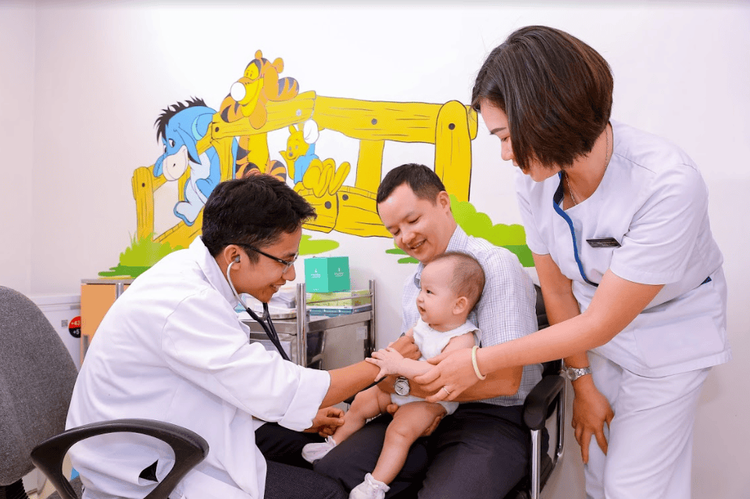
Khi phát hiện trẻ có dấu hiệu bất thường, cha mẹ nên đưa trẻ đến gặp bác sĩ chuyên khoa để được thăm khám kịp thời
Vinmec International General Hospital is the address for receiving and examining respiratory diseases that infants and young children are susceptible to: viral fever, bacterial fever, respiratory infection, pneumonia in children, .... With modern equipment, sterile space, minimizing the impact as well as the risk of disease spread. Along with that is the dedication from the doctors with professional experience with pediatric patients, making the examination no longer a concern of the parents.
Customers can directly go to Vinmec Health system nationwide to visit or contact the hotline here for support






